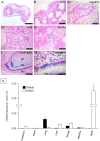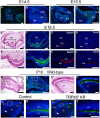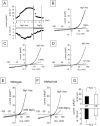The crucial role of the TRPM7 kinase domain in the early stage of amelogenesis
- PMID: 29273814
- PMCID: PMC5741708
- DOI: 10.1038/s41598-017-18291-0
The crucial role of the TRPM7 kinase domain in the early stage of amelogenesis
Abstract
Transient receptor potential melastatin-7 (TRPM7) is a bi-functional protein containing a kinase domain fused to an ion channel. TRPM7 is highly expressed in ameloblasts during tooth development. Here we show that TRPM7 kinase-inactive knock-in mutant mice (TRPM7 KR mice) exhibited small enamel volume with opaque white-colored incisors. The TRPM7 channel function of ameloblast-lineage cells from TRPM7 KR mice was normal. Interestingly, phosphorylation of intracellular molecules including Smad1/5/9, p38 and cAMP response element binding protein (CREB) was inhibited in ameloblasts from TRPM7 KR mice at the pre-secretory stage. An immunoprecipitation assay showed that CREB was bound to TRPM7, suggesting that direct phosphorylation of CREB by TRPM7 was inhibited in ameloblast-lineage cells from TRPM7 KR mice. These results indicate that the function of the TRPM7 kinase domain plays an important role in ameloblast differentiation, independent of TRPM7 channel activity, via phosphorylation of CREB.
Conflict of interest statement
The authors declare that they have no competing interests.
Figures







References
Publication types
MeSH terms
Substances
LinkOut - more resources
Full Text Sources
Other Literature Sources
Molecular Biology Databases
Miscellaneous

